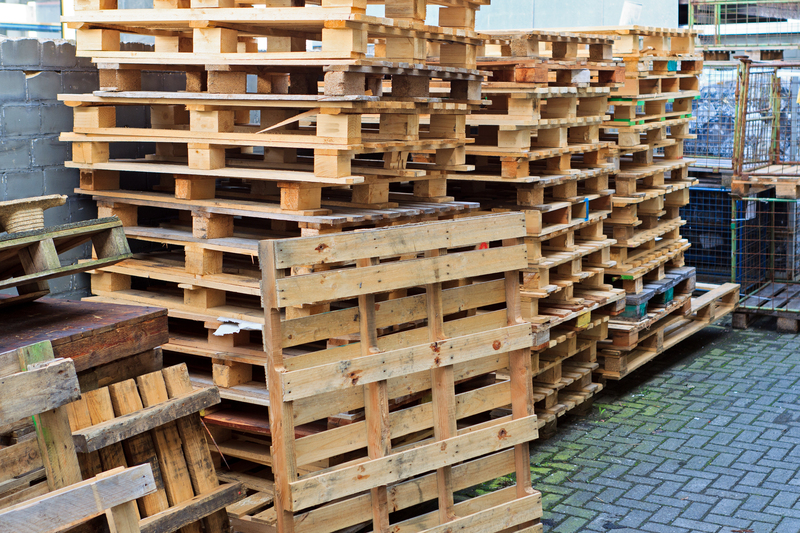How to Remove Large Furniture Items Without Damaging Your Home
Removing large furniture pieces from your home can feel like a daunting challenge. Whether you're moving, redecorating, or simply getting rid of unwanted items, the process requires careful planning and execution. Improper handling can lead to scratches on walls, dented door frames, damaged floors, or even personal injury. To help you manage this task efficiently, we've created a comprehensive guide on how to remove large furniture items without damaging your home. Follow these tips and tricks to ensure your furniture removal process is smooth, safe, and stress-free.

Why Properly Removing Large Furniture Matters
Many people underestimate the challenges involved in moving bulky items. It's not just about the weight--odd shapes, delicate finishes, and tight spaces escalate the risk of causing costly damage. By learning how to move large furniture without harming your home, you not only protect your investment but also extend the life of your furniture and your property.
- Protects your home's value: Minimizes repair costs from unintentional dings or scratches.
- Reduces stress: A smoother process lets you focus on settling into your new space.
- Preserves belongings: Less risk of broken furniture ensures items can be reused or resold.
Preparing for Large Furniture Removal
1. Assess the Furniture and Pathways
Before attempting to move anything, carefully inspect both the item and your home's layout:
- Measure the furniture: Take height, width, and depth into account.
- Check all exits: Doorways, hallways, stairwells, and corners should be measured to ensure a smooth fit.
- Note potential obstacles--light fixtures, railings, and low ceilings might require extra caution.
2. Gather the Right Equipment
Using proper tools and supplies will make moving large furniture much safer and reduce the potential for damage. Essential equipment includes:
- Furniture sliders: Protect your floors and ease movement, especially on hardwood or tile.
- Moving blankets and pads: Shield surfaces from dings, dents, and scratches.
- Stretch wrap and tape: Secure drawers, doors, and cushions in place.
- Straps and dollies: Provide additional leverage and support for especially heavy or large pieces.
- Tool kits: For disassembling furniture, keep screwdrivers, Allen wrenches, and pliers handy.
- Protective gear--gloves for grip and back support for heavy lifting.
3. Disassemble When Possible
Whenever you can, break down large furniture into manageable parts. Removing table legs, separating sofas, or detaching bed headboards will make the moving process less risky and more efficient.
- Keep all hardware in labeled bags to avoid confusion later.
- Take photos during disassembly for easy reassembly.
- Read manufacturer's instructions for specific guidance on taking furniture apart safely.
Techniques for Removing Large Furniture Items Safely
1. Protect Your Home's Surfaces
One of the most important steps in removing oversize furniture is safeguarding your walls, floors, and doorways:
- Doorways: Temporarily remove doors from hinges if needed to create extra space. Cover frames with towels or foam padding to prevent nicks and dents.
- Floors: Place cardboard, moving blankets, or special floor runners along pathways. Furniture sliders can minimize scratching, especially on hardwood.
- Walls and Corners: Wrap large furniture in quilts or blankets. For tight turns, use corner guards or bubble wrap for extra protection.
2. Adopt Proper Lifting and Moving Techniques
A major cause of damage during furniture removal (and the risk of injury) is improper technique. Use the following guidelines for safe lifting and transporting:
- Lift with your legs, not your back: This prevents strain and injury.
- Keep the object close: Holding furniture near your body improves control and balance.
- Communicate with helpers: Count down or assign commands for starting, stopping, and turning.
- Use moving straps: These distribute weight and make carrying easier, especially for awkward shapes.
- Move slowly and steadily--avoid sudden jerks or attempts to rush.
3. Utilize the Right Moving Pathways
Plan the best routes ahead of time to remove bulky furniture without incident:
- Clear all obstacles: Remove rugs, decorations, and other furniture from the path.
- Consider window or balcony exits: For extremely large pieces that won't fit through doors, professional movers can sometimes lower items safely.
- Avoid narrow stairwells when possible to reduce the risk of scraping walls and handrails.
4. Sliding Versus Carrying
Whenever feasible, slide heavy furniture instead of lifting it. This technique minimizes both physical strain and the risk of dropping or bumping items:
- Use furniture sliders or even thick towels under each corner.
- For carpeted areas, hard plastic sliders work best; for hardwood or tile, opt for soft felt pads.
- Lift corners slightly to place sliders underneath, then gently push across surfaces.
Avoiding Common Mistakes in Furniture Removal
Neglecting to Measure Properly
Nothing is more frustrating than discovering your large furniture won't fit through a doorway after you've already started moving. Always triple-check your measurements--height, width, depth, and diagonal dimensions--before even attempting removal.
Rushing the Process
Moving quickly increases the risk of dropping furniture, snagging upholstery, or scratching paint. Schedule enough time and enlist help if needed to keep things calm and controlled.
Forgetting to Protect Both the Furniture and Home
Wrap vulnerable edges and corners of your furniture. Temporary coverings for walls, banisters, and door frames will save money and headaches later on.
Special Considerations for Different Furniture Types
Sofas and Couches
- Remove cushions to make the item lighter and more manageable.
- Check for detachable legs or arms for easier transport through tight spaces.
- Use plastic wrap to prevent upholstery snags.
Large Tables
- Remove the tabletop from the base if possible; carry each part separately.
- Protect sharp corners with bubble wrap or foam padding.
Bookcases and Cabinets
- Fully empty shelves to prevent shifting or breakage.
- Secure or remove doors and drawers with stretch wrap or tape.
- Use two dollies for especially wide or heavy items to balance the load.
Appliances and Mattresses
- Disconnect all hoses and cords, and secure them with tape.
- Wrap appliances in moving blankets; use furniture dollies for easier handling.
- Mattresses often benefit from special moving bags that also protect against dirt.
What If the Furniture Won't Fit? Alternate Removal Strategies
Despite your best efforts, you may find that certain oversized furniture pieces just won't fit through doors or hallways. In these situations:
- Disassemble further: Some large items (such as sectionals or entertainment centers) can be broken down further with careful disassembly.
- Consult the manufacturer or a local handyman for expert help with complex pieces.
- Utilize windows or balconies: Professional movers sometimes hoist items out through large windows or over balconies with proper safety gear.
- If all else fails, consider donating, selling, or recycling the item locally, rather than risking damage to your home.
Hiring Professionals vs. DIY: Which Is Best for You?
For especially heavy or delicate items, or if you're short on time or manpower, hiring professional movers is often worth the investment. Experienced movers bring:
- Specialized equipment for moving large items without damage.
- Trained techniques for handling difficult spaces.
- Insurance coverage for accidental damage.
- Efficiency that can save you from hours of labor.
However, for smaller moves or if you enjoy a DIY challenge, following the best practices outlined above can help you safely move large furniture items without the extra cost.
After the Move: Inspecting Your Home and Furniture
- Check all surfaces for scratches, dents, or marks right away.
- Address minor scuffs on walls or floors with repair kits.
- Reassemble your furniture carefully following your notes and photos from disassembly.
- Clean up the workspaces and return any borrowed tools.

Environmental and Disposal Considerations
Sometimes, moving large furniture is part of a downsizing or decluttering project. Consider these environmentally responsible disposal options:
- Donate gently used furniture to thrift stores, shelters, or local charities.
- Sell valuable items online--Facebook Marketplace, Craigslist, or OfferUp can connect you with buyers.
- Many municipalities offer large item pickup services for recycling or proper disposal.
- If pieces are broken, research local recycling programs to keep them out of the landfill.
Conclusion: Protect Your Home, Furniture, and Peace of Mind
Learning how to remove large furniture items without damaging your home doesn't have to be stressful or overwhelming. With the right planning, proper equipment, and safe moving techniques, you can get big pieces out of your house while protecting your walls, floors, and cherished belongings. Whether you're tackling the job yourself or hiring professionals, careful preparation is the key to a successful, damage-free move.
Remember: Always measure everything twice, protect both your furniture and your home, and never be afraid to ask for help with especially tricky items. With these principles as your guide, you can move even the heaviest furniture without leaving a mark.